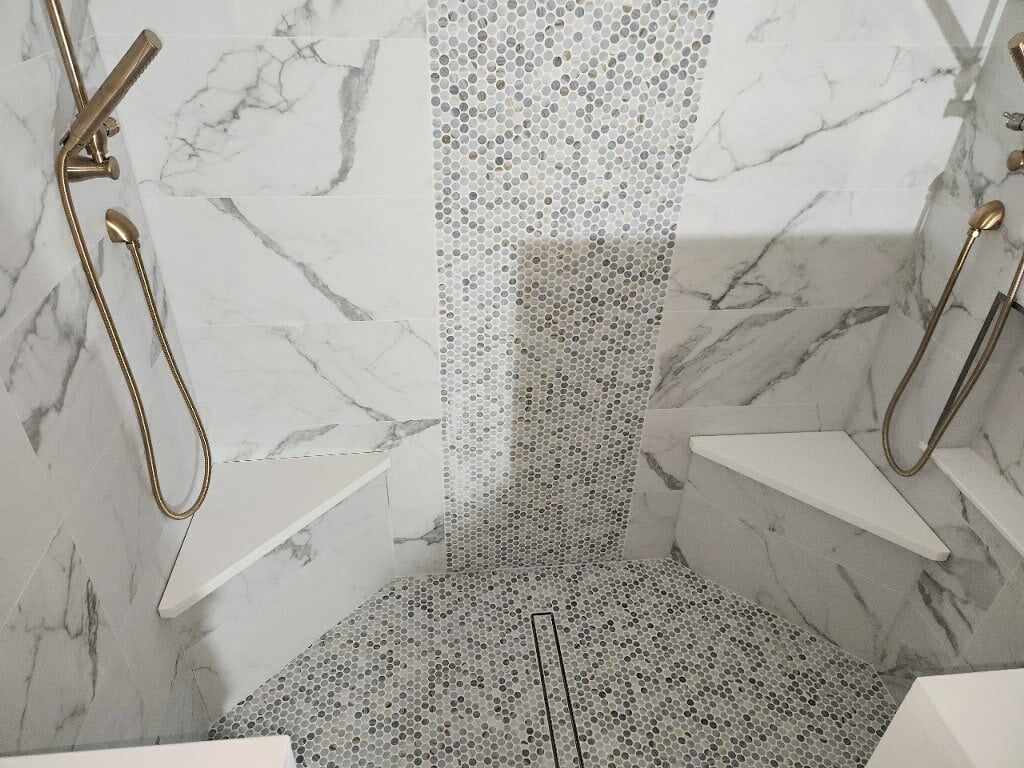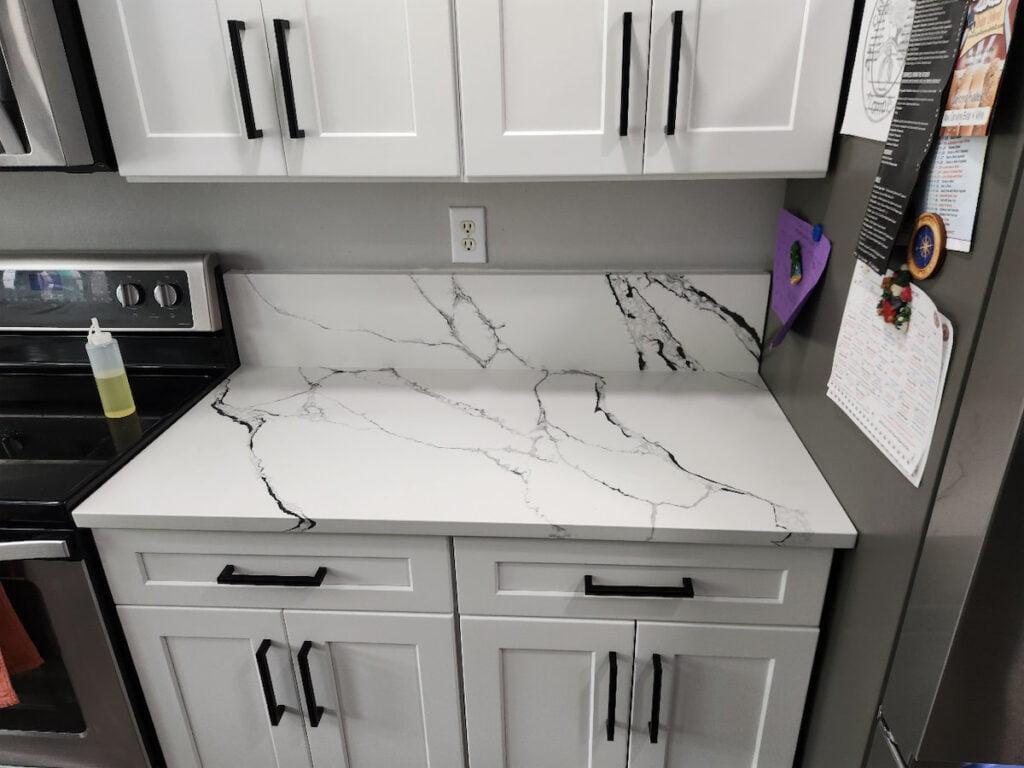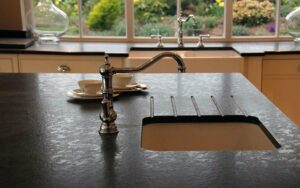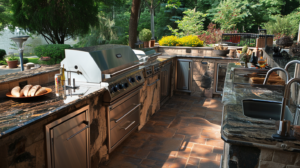When selecting materials for construction and design projects, the choice between natural stone and engineered stone is a common consideration. Natural stones such as granite, marble, and limestone have been used for centuries, valued for their unique beauty and durability. Engineered stones, including quartz and other composite materials, have gained popularity more recently due to their consistency, durability, and often lower cost.
Understanding the differences between these materials, particularly in terms of cost, is crucial for homeowners, builders, and designers. The decision can significantly impact the overall budget, aesthetic outcome, and long-term maintenance requirements of a project.
Importance of Understanding Cost Differences
Knowing the cost differences between natural and engineered stone helps in making informed decisions that align with both the financial constraints and the desired outcome of the project. The initial investment, installation expenses, and long-term maintenance costs vary between these materials, and each has distinct advantages and drawbacks.
- Budget Planning: Accurate cost estimations allow for better budget management, preventing unforeseen expenses during the project.
- Value for Money: Understanding the long-term value and durability of each material ensures that the chosen option provides the best return on investment.
- Aesthetic Choices: Different stones offer varied aesthetic appeal. Understanding costs helps in selecting materials that fit both the design vision and financial plan.
- Maintenance Considerations: Some materials require more upkeep than others. Factoring in maintenance costs can influence the overall budget and long-term satisfaction with the material choice.
By delving into the cost factors of both natural and engineered stone, this article aims to provide a comprehensive guide that aids in making well-informed, cost-effective decisions for construction and design projects.

Natural Stone
Definition and Types
Natural stone refers to a variety of mineral-based materials that are extracted directly from the earth. Each type of natural stone has unique characteristics and aesthetic qualities, making them popular choices for various applications in construction and design. The most common types of natural stone include:
- Granite: Known for its hardness and resistance to scratching, granite is a popular choice for countertops and flooring.
- Marble: Valued for its classic elegance and veined patterns, marble is often used in sculptures, flooring, and countertops.
- Limestone: Characterized by its soft texture and natural look, limestone is commonly used in building facades, flooring, and decorative elements.
- Slate: Recognized for its fine grain and durability, slate is typically used in roofing, flooring, and outdoor walkways.
- Travertine: With its porous texture and range of earthy colors, travertine is used in flooring, wall cladding, and outdoor patios.
Characteristics and Benefits
Natural stone is prized for its unique aesthetic and practical properties. Key characteristics and benefits include:
- Durability: Most natural stones are incredibly durable and can withstand heavy use, making them ideal for high-traffic areas.
- Aesthetic Appeal: Each piece of natural stone is unique, offering one-of-a-kind patterns and colors that can enhance the beauty of any space.
- Value Addition: Natural stone can increase the resale value of a property due to its perceived luxury and long-lasting nature.
- Heat Resistance: Many natural stones, particularly granite and marble, are resistant to heat, making them suitable for kitchen countertops and fireplaces.
- Eco-Friendliness: As a natural material, stone has a lower environmental impact compared to synthetic alternatives, especially when locally sourced.
Common Uses in Construction and Design
Natural stone is versatile and can be used in various applications within construction and design, including:
- Countertops: Granite and marble are popular choices for kitchen and bathroom countertops due to their durability and aesthetic appeal.
- Flooring: Stones like travertine, slate, and limestone are commonly used for flooring in both residential and commercial settings.
- Wall Cladding: Natural stone can be used to create stunning feature walls, facades, and fireplace surrounds.
- Outdoor Spaces: Slate and granite are often used for outdoor patios, walkways, and pool surrounds due to their resistance to weathering.
- Decorative Elements: Marble and limestone are frequently used in sculptural pieces, columns, and other decorative architectural elements.
Understanding these aspects of natural stone can help in making informed decisions about its use in various construction and design projects, balancing beauty, functionality, and cost.
Engineered Stone
Definition and Types
Engineered stone, also known as man-made or synthetic stone, is a composite material made from crushed stone bound together by an adhesive, typically polymer resin. This process allows for the creation of surfaces that mimic the appearance of natural stone but offer enhanced performance characteristics. The most common types of engineered stone include:
- Quartz: Made primarily from natural quartz crystals combined with resins and pigments, quartz surfaces are non-porous, durable, and come in a wide variety of colors and patterns.
- Recycled Stone Products: These surfaces are created from recycled natural stone fragments, industrial by-products, and other sustainable materials. They offer an eco-friendly alternative while maintaining the aesthetic appeal of natural stone.
Characteristics and Benefits
Engineered stone is designed to provide a range of practical benefits and aesthetic qualities, making it a popular choice for modern construction and design projects. Key characteristics and benefits include:
- Consistency: Unlike natural stone, engineered stone offers uniformity in color and pattern, providing a more consistent look across large surfaces.
- Durability: Engineered stone surfaces are highly resistant to scratching, staining, and chipping, making them suitable for high-traffic areas.
- Non-Porous: The non-porous nature of engineered stone prevents the absorption of liquids, reducing the risk of staining and making the surfaces easier to clean and maintain.
- Variety: Engineered stone is available in a wide range of colors, patterns, and finishes, allowing for greater design flexibility.
- Eco-Friendly Options: Recycled stone products provide a sustainable choice, utilizing waste materials and reducing environmental impact.
- Cost-Effective: Generally, engineered stone can be more affordable than high-end natural stones, offering a budget-friendly option without compromising on aesthetics or performance.
Common Uses in Construction and Design
Engineered stone is versatile and can be used in a variety of applications within construction and design, including:
- Countertops: Quartz is a popular choice for kitchen and bathroom countertops due to its durability, non-porous surface, and wide range of design options.
- Flooring: Engineered stone tiles are used for both residential and commercial flooring, providing a durable and low-maintenance solution.
- Wall Cladding: Engineered stone panels can be used for interior and exterior wall cladding, offering a sleek and modern appearance.
- Bathroom Surfaces: Due to their non-porous nature, engineered stone surfaces are ideal for bathroom vanities, shower surrounds, and tub decks, resisting moisture and mildew.
- Backsplashes: Engineered stone is often used for kitchen and bathroom backsplashes, providing a durable and attractive surface that complements countertops.
- Commercial Applications: Engineered stone is commonly used in commercial settings such as hotels, restaurants, and office buildings for countertops, flooring, and wall panels due to its durability and aesthetic appeal.
By understanding the characteristics and benefits of engineered stone, as well as its common uses, one can make informed decisions about incorporating this versatile material into various construction and design projects.
Cost Factors of Natural Stone
Material Costs
The cost of natural stone varies widely depending on the type and quality of the stone. Factors influencing material costs include:
- Type of Stone: Different stones have different price points. For example, rare marble varieties are often more expensive than more common stones like granite or limestone.
- Quality and Grade: Higher-grade stones with fewer imperfections and more consistent patterns are typically more expensive.
- Slab Size: Larger slabs tend to cost more due to their size and the difficulty in extracting and transporting them.
Extraction and Transportation
The process of extracting natural stone from quarries and transporting it to the site can significantly impact overall costs:
- Quarrying: The methods used to extract stone (e.g., blasting, cutting) can vary in cost. Stones that are more difficult to quarry, such as marble, can be more expensive.
- Transportation: The distance from the quarry to the project site affects transportation costs. Locally sourced stone is generally less expensive to transport than imported stone.
- Handling and Shipping: Stones that are fragile or require special handling can incur additional costs for careful packaging and shipping.
Installation and Maintenance
The installation and ongoing maintenance of natural stone are critical factors in the overall cost:
- Installation: Natural stone installation requires skilled labor to ensure proper fitting and finishing. Complex installations, such as intricate patterns or custom cuts, can increase labor costs.
- Sealing and Treatment: Most natural stones require sealing to protect against stains and moisture. The frequency of resealing depends on the type of stone and usage, adding to maintenance costs.
- Repair and Restoration: Over time, natural stone may require repair or restoration, such as polishing or fixing chips and cracks. These costs can vary based on the extent of the damage and the type of stone.
Long-Term Value and Durability
Investing in natural stone can offer long-term value and durability, impacting overall cost-effectiveness:
- Durability: Natural stones like granite and slate are extremely durable and can last for decades with proper care, reducing the need for replacement.
- Aesthetic Appeal: The unique and timeless beauty of natural stone can enhance property value and appeal, making it a worthwhile investment.
- Resale Value: Properties with high-quality natural stone features often have higher resale values due to the perceived luxury and durability of the material.
- Maintenance Costs: While natural stone can be costly to maintain, its longevity and resistance to wear can offset these expenses over time.
Understanding these cost factors is crucial for making informed decisions about using natural stone in construction and design projects, balancing initial expenses with long-term benefits.
Cost Factors of Engineered Stone
Material Costs
The cost of engineered stone can be influenced by several factors related to the raw materials and composition:
- Type of Stone: The specific type of engineered stone, such as quartz, can affect costs. Quartz surfaces are generally more expensive than recycled stone products due to the quality and properties of quartz.
- Quality and Brand: Higher-end brands and higher-quality products tend to be more expensive due to better raw materials and manufacturing standards.
- Design and Color: Custom colors, patterns, and finishes can increase material costs compared to standard options.
Manufacturing Process
The manufacturing process of engineered stone plays a significant role in determining its cost:
- Technology and Equipment: The use of advanced technology and equipment in the production process can add to the cost. Automated and precise machinery ensures consistent quality and design.
- Resins and Additives: The type and quality of resins and additives used in the production of engineered stone affect its final price. Higher-quality resins that provide better durability and resistance to staining are more expensive.
- Labor and Overhead: The costs associated with labor, energy, and facility overhead in the manufacturing process also contribute to the overall price of engineered stone.
Installation and Maintenance
The installation and maintenance of engineered stone impact its total cost, similar to natural stone:
- Installation: Engineered stone requires professional installation to ensure proper fitting and alignment. Although generally easier to work with than natural stone, complex installations can still raise labor costs.
- Sealing: Unlike natural stone, most engineered stone surfaces do not require sealing, reducing initial and ongoing maintenance costs.
- Cleaning and Upkeep: Engineered stone surfaces are typically low-maintenance, requiring only regular cleaning with mild detergents. This ease of maintenance contributes to lower long-term costs.
Long-Term Value and Durability
The long-term value and durability of engineered stone are significant factors in its overall cost-effectiveness:
- Durability: Engineered stone is highly durable and resistant to scratching, staining, and heat, making it suitable for high-traffic areas and contributing to its longevity.
- Consistency and Quality Control: Engineered stone offers consistent quality and appearance, which can be a significant advantage over natural stone that may have natural imperfections.
- Resale Value: Properties with high-quality engineered stone features can have increased resale value due to the material’s durability and modern appeal.
- Eco-Friendly Options: Some engineered stones, especially those made from recycled materials, provide environmental benefits that can appeal to eco-conscious buyers and potentially increase property value.
Understanding these cost factors helps in making informed decisions about using engineered stone in construction and design projects, balancing initial investments with long-term benefits and maintenance requirements.
Comparative Analysis
Initial Costs: Natural vs. Engineered Stone
- Natural Stone:
- Generally, natural stone can be more expensive due to the rarity and uniqueness of each slab.
- High-end materials like marble or rare granite varieties are particularly costly.
- Average costs for natural stone can range from $50 to $200 per square foot, depending on the type and quality.
- Engineered Stone:
- Engineered stone tends to be less expensive than high-end natural stone but can be comparable to mid-range natural stone options.
- Quartz and other engineered stones typically cost between $50 to $120 per square foot.
- The cost is influenced by the brand, quality, and specific design features.
Installation Costs: Natural vs. Engineered Stone
- Natural Stone:
- Installation of natural stone is generally more labor-intensive and requires skilled craftsmanship to handle the weight and complexity of the material.
- The cost can vary based on the type of stone, project complexity, and location, typically ranging from $30 to $50 per square foot for installation alone.
- Custom cuts and intricate designs can further increase installation costs.
- Engineered Stone:
- Engineered stone is often easier to install due to its uniformity and predictable dimensions, reducing labor costs.
- Installation costs for engineered stone generally range from $20 to $40 per square foot.
- The material’s consistency and ease of handling can lead to quicker installation times and lower labor expenses.
Maintenance Costs: Natural vs. Engineered Stone
- Natural Stone:
- Maintenance costs for natural stone can be higher due to the need for regular sealing to prevent staining and damage.
- Cleaning natural stone requires specific products to avoid etching or discoloration, adding to maintenance expenses.
- Repairs and restoration, such as polishing and fixing chips, can be costly over time.
- Engineered Stone:
- Engineered stone is low-maintenance, typically requiring only routine cleaning with mild soap and water.
- Most engineered stones do not require sealing, reducing long-term maintenance costs.
- The material’s resistance to stains and scratches means fewer repairs and lower overall maintenance expenses.
Longevity and Value Over Time
- Natural Stone:
- Natural stone is highly durable and can last for decades, maintaining its beauty and structural integrity with proper care.
- The unique and timeless aesthetic of natural stone can enhance property value and appeal.
- High-quality natural stone can offer significant long-term value, but this comes with higher maintenance costs.
- Engineered Stone:
- Engineered stone is also highly durable and can last many years with minimal maintenance.
- Its consistent quality and modern appeal can contribute positively to property value.
- Engineered stone provides a cost-effective solution with lower maintenance, making it an attractive option for many homeowners and designers.
Summary
When comparing natural stone and engineered stone, several factors influence the overall decision:
- Initial Costs: Engineered stone tends to be more affordable than high-end natural stone, though comparable to mid-range options.
- Installation Costs: Natural stone installation is generally more expensive due to the complexity and craftsmanship required, whereas engineered stone offers easier and often cheaper installation.
- Maintenance Costs: Natural stone incurs higher maintenance costs due to sealing and specific cleaning requirements, while engineered stone is low-maintenance.
- Longevity and Value: Both materials offer durability and long-term value, but natural stone’s unique aesthetic and engineered stone’s ease of maintenance cater to different preferences and needs.
By considering these comparative factors, one can make a well-informed decision that balances cost, maintenance, and aesthetic preferences for their specific project.

Aesthetic and Functional Considerations
Visual Appeal and Design Flexibility
- Natural Stone:
- Visual Appeal: Natural stone offers a unique and timeless beauty. Each piece of stone has distinct patterns, veining, and color variations, making every installation one-of-a-kind. Stones like marble and granite are renowned for their luxurious appearance and natural elegance.
- Design Flexibility: While natural stone’s uniqueness is a significant advantage, it can also be a limitation in terms of design flexibility. Matching patterns and colors across large installations can be challenging. However, the natural imperfections and variations are often considered a desirable feature in high-end designs.
- Engineered Stone:
- Visual Appeal: Engineered stone can mimic the look of natural stone or offer a variety of custom colors and patterns not found in nature. Quartz, for instance, can be produced in a wide range of hues and finishes, from matte to high gloss, providing versatility in design.
- Design Flexibility: Engineered stone provides greater design flexibility due to its uniformity and availability in large slabs without natural imperfections. This consistency allows for seamless installations and the ability to create intricate patterns or uniform surfaces with ease.
Suitability for Various Applications
- Natural Stone:
- Indoor Applications: Natural stone is ideal for countertops, flooring, wall cladding, and fireplaces. Its durability and aesthetic appeal make it suitable for high-traffic areas and surfaces that require a touch of luxury.
- Outdoor Applications: Stones like granite and slate are well-suited for outdoor use, including patios, walkways, and exterior cladding, due to their resistance to weathering and durability.
- Engineered Stone:
- Indoor Applications: Engineered stone is highly suitable for kitchen countertops, bathroom vanities, backsplashes, and flooring. Its non-porous surface and resistance to stains and scratches make it ideal for areas prone to spills and heavy use.
- Outdoor Applications: While some engineered stones can be used outdoors, exposure to UV rays and weather conditions can cause discoloration and degradation over time. Therefore, it is less commonly used for outdoor applications compared to natural stone.
Environmental Impact and Sustainability
- Natural Stone:
- Environmental Impact: The extraction and processing of natural stone have a significant environmental impact, including habitat disruption, energy consumption, and carbon emissions. However, natural stone is a natural product that can be recycled and repurposed.
- Sustainability: Sustainable practices in quarrying and processing, such as using local stone to reduce transportation emissions and implementing quarry restoration projects, can mitigate some environmental impacts. Natural stone’s longevity and durability also contribute to its sustainability.
- Engineered Stone:
- Environmental Impact: The production of engineered stone involves energy-intensive manufacturing processes and the use of resins, which can have environmental implications. However, some engineered stones incorporate recycled materials, reducing waste and the need for virgin resources.
- Sustainability: Engineered stone can be considered more sustainable when it includes recycled content or uses eco-friendly manufacturing practices. Its durability and low maintenance requirements also reduce the need for replacements and repairs, contributing to long-term sustainability.
Summary
When considering aesthetic and functional aspects, both natural and engineered stones have distinct advantages and limitations:
- Visual Appeal and Design Flexibility: Natural stone offers unique beauty with inherent variations, while engineered stone provides consistent patterns and a wide range of design options.
- Suitability for Various Applications: Natural stone is highly durable for both indoor and outdoor use, while engineered stone excels in indoor applications with its low maintenance and stain-resistant properties.
- Environmental Impact and Sustainability: Both materials have environmental considerations. Natural stone’s extraction impacts can be mitigated with sustainable practices, while engineered stone can incorporate recycled materials and eco-friendly production methods.
By evaluating these factors, homeowners, builders, and designers can choose the material that best fits their aesthetic preferences, functional needs, and environmental values.
Case Studies and Examples
Real-World Examples of Natural Stone Projects
Example 1: Luxury Residential Kitchen
- Project Description: A high-end kitchen renovation in a luxury home featuring a large island and extensive countertop space.
- Stone Used: Calacatta Marble
- Features: The marble’s striking white background with bold, dramatic veining served as a focal point in the kitchen, enhancing its luxurious appeal.
- Cost: Approximately $250 per square foot installed.
- Outcome: The unique patterns of Calacatta marble provided an elegant and timeless aesthetic, significantly increasing the home’s market value.
Example 2: Public Park Walkways
- Project Description: The redevelopment of a public park incorporating natural stone pathways and seating areas.
- Stone Used: Bluestone
- Features: The durable and weather-resistant bluestone provided a practical and attractive solution for high-traffic outdoor areas.
- Cost: Approximately $70 per square foot installed.
- Outcome: The natural beauty and durability of bluestone enhanced the park’s aesthetics and functionality, with minimal maintenance required over the years.
Example 3: Corporate Office Building Facade
- Project Description: The facade of a corporate headquarters designed to project an image of stability and prestige.
- Stone Used: Granite
- Features: Polished granite panels were used to create a sleek and modern exterior that conveyed strength and sophistication.
- Cost: Approximately $150 per square foot installed.
- Outcome: The use of granite not only provided an impressive visual impact but also ensured the building’s exterior remained low-maintenance and durable.
Real-World Examples of Engineered Stone Projects
Example 1: Contemporary Residential Bathroom
- Project Description: A bathroom renovation in a contemporary home, featuring sleek surfaces and modern design elements.
- Stone Used: Quartz (Engineered Stone)
- Features: Quartz countertops and shower walls in a neutral color provided a clean, modern look with excellent resistance to moisture and stains.
- Cost: Approximately $90 per square foot installed.
- Outcome: The use of quartz offered a low-maintenance, durable, and stylish solution that enhanced the bathroom’s modern appeal.
Example 2: Hotel Lobby Renovation
- Project Description: Renovation of a hotel lobby aiming to achieve a high-end look with durable materials.
- Stone Used: Recycled Glass and Quartz Composite
- Features: Engineered stone surfaces made from recycled materials provided a sophisticated and eco-friendly design element.
- Cost: Approximately $100 per square foot installed.
- Outcome: The lobby’s updated look combined elegance with sustainability, appealing to eco-conscious guests and reducing long-term maintenance costs.
Example 3: Retail Store Counters
- Project Description: The installation of new checkout counters in a high-traffic retail store.
- Stone Used: Quartz
- Features: Quartz countertops offered a durable, scratch-resistant surface that could withstand heavy use and still look appealing.
- Cost: Approximately $80 per square foot installed.
- Outcome: The quartz surfaces provided a practical and attractive solution that minimized maintenance and repair costs while maintaining a polished appearance.
Cost Analysis of Specific Projects
Natural Stone Project: Luxury Residential Kitchen
- Total Area: 100 square feet
- Stone: Calacatta Marble
- Material Cost: $200 per square foot
- Installation Cost: $50 per square foot
- Total Cost: $25,000
- Maintenance Cost: $500 annually for sealing and care
- Long-Term Value: High resale value due to the luxurious material, enhancing the home’s market appeal.
Engineered Stone Project: Contemporary Residential Bathroom
- Total Area: 50 square feet
- Stone: Quartz
- Material Cost: $70 per square foot
- Installation Cost: $20 per square foot
- Total Cost: $4,500
- Maintenance Cost: Minimal, approximately $50 annually for cleaning supplies
- Long-Term Value: Durable and low-maintenance, providing excellent cost-effectiveness and modern aesthetic appeal.
By analyzing these real-world examples and their associated costs, one can gain a clearer understanding of how natural and engineered stones perform in various applications and their impact on project budgets and long-term value.
Conclusion
Summary of Key Points
- Natural Stone vs. Engineered Stone: Natural stone, including marble, granite, and limestone, offers unique beauty and timeless appeal, with each piece showcasing distinct patterns and colors. Engineered stone, such as quartz and recycled stone products, provides consistent quality and a wide range of design options, often at a lower cost.
- Cost Factors: Natural stone tends to have higher initial material and installation costs, influenced by extraction and transportation expenses. Engineered stone generally offers more affordable and predictable pricing due to its manufactured nature. Both materials have different maintenance costs, with natural stone requiring regular sealing and specialized care, while engineered stone is typically low-maintenance.
- Aesthetic and Functional Considerations: Natural stone is prized for its unique visual appeal and long-term durability, making it ideal for both indoor and outdoor applications. Engineered stone excels in design flexibility and ease of installation, particularly in indoor settings, and offers an eco-friendly option with recycled content.
- Environmental Impact: The environmental impact of natural stone includes the energy-intensive extraction process, whereas engineered stone can incorporate recycled materials, reducing its environmental footprint. Sustainable practices in both materials can mitigate some environmental concerns.
Recommendations for Choosing Between Natural and Engineered Stone
- Budget Constraints: If budget is a primary concern, engineered stone is generally more cost-effective, offering a balance of aesthetics, durability, and low maintenance costs. It provides a modern look with consistent quality at a lower price point.
- Design Flexibility: For projects requiring specific colors, patterns, or seamless installations, engineered stone is the better choice due to its uniformity and wide range of options. It allows for greater customization and design consistency.
- Aesthetic Preferences: If the goal is to achieve a luxurious, unique, and timeless look, natural stone is unmatched in its natural beauty and individuality. High-end projects or those seeking a prestigious appearance should consider investing in natural stone.
- Maintenance Considerations: For those seeking low-maintenance surfaces, engineered stone is advantageous due to its non-porous nature and resistance to stains and scratches. Natural stone, while durable, requires regular maintenance to preserve its appearance and longevity.
- Environmental Concerns: Eco-conscious buyers should look for engineered stone options that incorporate recycled materials or seek natural stone from quarries that practice sustainable extraction and production methods.
In conclusion, the choice between natural and engineered stone depends on various factors, including budget, design preferences, maintenance willingness, and environmental impact. By carefully considering these aspects, homeowners, builders, and designers can make informed decisions that best suit their specific project needs and goals.





